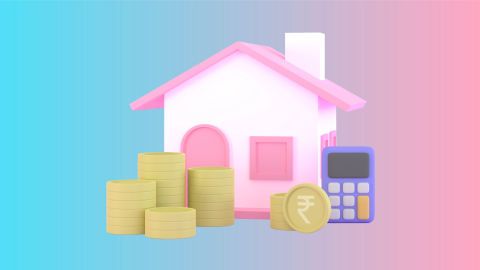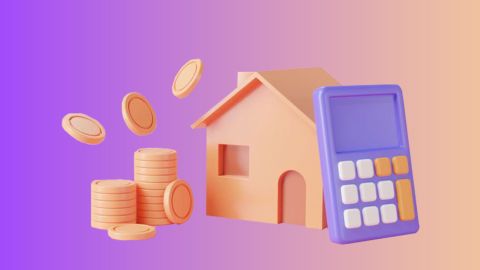When purchasing an under-construction property, understanding the timeline for when home loan EMI starts is crucial for effective financial planning. The timing of EMI commencement can vary based on several factors, including the loan disbursement schedule and the construction progress. Navigating these intricacies can help potential homeowners manage their budgets more effectively and avoid unexpected financial strain.
This guide explores how home loans are structured for under-construction properties and the implications for your repayment schedule.
Understanding home loan EMI
Before we dive into the specifics, it's essential to understand what an EMI is. An EMI, or Equated Monthly Instalment, is the fixed payment amount a borrower pays to a lender at a specified date each month. EMIs are used to pay off both interest and principal over a set period until the loan is fully paid off. For an under-construction property, the timing of these payments can vary.
When home loans EMI starts for under-construction property
When you take a home loan for an under-construction property, the EMI typically doesn't start immediately. Instead, the repayment process follows a specific structure that aligns with the construction phases of the property. Here's a detailed breakdown of how this works:
- Disbursement of loan amount: The loan amount is disbursed in stages, based on the construction progress. These stages are known as tranches.
- Pre-EMI phase: During the construction period, borrowers pay only the interest on the disbursed loan amount. This interest is known as Pre-EMI. The Pre-EMI payments continue until the full loan amount is disbursed or the property is ready for possession.
- Full EMI phase: Once the entire loan amount is disbursed, or the property is completed and handed over, the borrower starts paying the full EMI, which includes both the principal and the interest.
For many homebuyers, the timing of these payments is a crucial consideration. Planning your finances during the pre-EMI phase can help you manage your budget effectively, especially if you are also paying rent or managing other financial obligations during the construction period.
Overview of the EMI start date for under-construction properties
When you take a home loan for an under-construction property, the disbursement of the loan usually happens in stages, aligned with the construction progress. Consequently, the repayment structure, including when home loan EMI starts for under-construction property, differs from loans for ready-to-move-in properties. Typically, lenders offer two repayment options: pre-EMI and full EMI, each commencing at different stages of the loan and property construction process.
Key factors affecting when EMI starts for under-construction properties
Several factors determine when home loan EMI starts for under-construction properties:
- Loan disbursement schedule: The lender disburses the loan amount in tranches, linked to the completion stages of the property. The EMI payments usually begin after the full loan amount is disbursed.
- Builder’s construction schedule: The pace at which the builder completes the project can influence when EMI payments start. Delays in construction can extend the pre-EMI period.
- Loan agreement terms: Different lenders have varying terms regarding the commencement of EMI payments. It’s essential to thoroughly review your loan agreement to understand these terms.
Understanding your loan agreement is critical, but choosing the right lender makes all the difference. Bajaj Finserv provides transparent terms and attractive interest rates starting at 7.45%* p.a, making homeownership more accessible. Check your loan offers with Bajaj Finserv to find a plan that suits your financial situation. You may already be eligible, find out by entering your mobile number and OTP.
Difference between pre-EMI and full EMI for under-construction property
Understanding the difference between pre-EMI and full EMI is crucial when discussing when home loan EMI starts for under-construction property.
- Pre-EMI: This is the interest paid on the loan amount disbursed until the final disbursement. During the construction phase, you pay only the interest component, which is generally lower than the full EMI.
- Full EMI: Once the entire loan amount is disbursed or the property is ready for possession, the borrower starts paying the full EMI, which includes both the principal and interest components.
Managing EMI for under-construction properties: Tips and strategies
Managing home loans EMI starts for under-construction property requires careful financial planning.
- Budgeting: Create a detailed budget that includes expected EMI payments, other monthly expenses, and a buffer for unexpected costs.
- Monitoring construction progress: Keep a close watch on the construction progress to anticipate when the transition from pre-EMI to full-EMI will occur.
- Savings cushion: Maintain a savings cushion to cover EMIs and other expenses during the construction phase.
Taking advantage of pre-EMI benefits requires partnering with a lender who understands your needs. A home loan from Bajaj Finserv offers flexible disbursement options and competitive rates that align with construction timelines. Check your eligibility for a home loan from Bajaj Finserv and discover how you can benefit from lower initial payments. You may already be eligible, find out by entering your mobile number and OTP.
Benefits of pre-EMI for under-construction property
Opting for pre-EMI can offer several advantages:
- Lower initial outgo: Since you are only paying the interest component, the monthly outgo is lower compared to a full EMI.
- Financial flexibility: Pre-EMI payments provide greater financial flexibility, allowing you to manage other financial commitments better during the construction phase.
- Staggered payments: The staggered nature of loan disbursements means that your interest payments increase gradually, aligning with the construction progress.
Risks of pre-EMI for under-construction property
Despite its benefits, pre-EMI carries certain risks:
- Extended interest payments: If the construction period extends, you end up paying interest for a longer duration, which could be more expensive in the long run.
- Construction delays: Delays in construction can lead to prolonged pre-EMI periods, increasing the total interest paid before the full EMI starts.
- Higher total cost: Over time, the total cost of interest paid during the pre-EMI period can add up, potentially making the overall loan repayment more expensive.
Financial planning for home loans on under-construction properties
Proper financial planning is essential when dealing with home loans for under-construction properties.
- Assessment of financial capacity: Evaluate your financial capacity to manage EMIs alongside other expenses.
- Choice of loan repayment option: Decide between pre-EMI and full EMI based on your financial situation and long-term plans.
- Emergency fund: Maintain an emergency fund to cover EMIs in case of financial setbacks.
Consider Bajaj Housing Finance Home Loan
For those considering purchasing an under-construction property, exploring home loan options from reputable financial institutions can make the process more manageable. Bajaj Housing Finance offers attractive home loan options with flexible terms and competitive interest rates, helping you turn your dream of owning a home into reality.
Here are a few benefits of applying for a Bajaj Housing Finance Home Loan:
- Convenient repayment options: Enjoy the convenience of extended repayment tenures of up to 32 years. Select a repayment plan that aligns with your financial situation, enabling you to effectively prioritise your loan repayment.
- Access extra funding with the top-up loan facility: Secure additional funds of Rs. 1 crore* or highert, through our home loan balance transfer facility. Utilise this surplus funding for home renovations, repairs, or expansions, benefiting from minimal documentation and attractive interest rates.
- Competitive interest rates: Take advantage of competitive home loan interest rates starting at 7.45%* p.a to ensure affordability and manageability.
- Tailored loan solutions: Customise your home loan to align with your specific needs with our flexible options. Personalise your loan amount and repayment tenure, empowering you to attain homeownership on your terms.
By choosing the right home loan, you can navigate the complexities of buying an under-construction property with confidence and ease. Apply for a home loan by visiting the Bajaj Finserv website today. You may already be eligible, check your offers by entering your mobile number and OTP.
Helpful resources and tips for home loan borrowers
Home loans designed for different professionals
|
|




